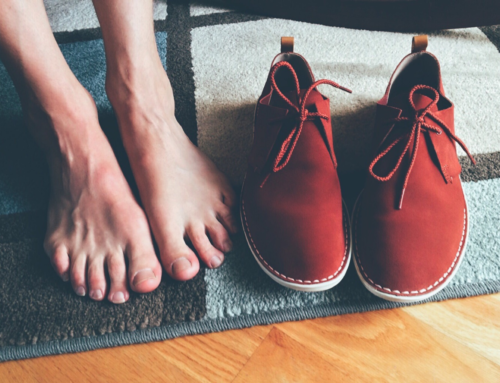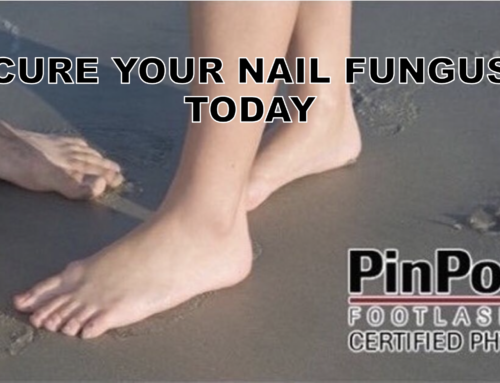Toenail fungus can be caught very easily. It’s infectious and spreads from one nail to the next over time. A person can also be infected if they walk barefoot in public places. These are places where other infected individuals have walked. Toenail fungus is more likely to grow in wet environments. Fungus likes public pools, showers, and locker rooms. Dermatologists or Podiatrists can easily diagnose patients with a clinical diagnosis. This blog will discuss toenail fungus causes and risk factors.
Signs of Toenail Fungus
As the infection progresses and the fungus grows, the nail must begin to hurt, and the pain gets worse with time. For that reason, treating the fungus at its earliest stages is the best way to avoid the consequences of the progression of the infection. Below is a list of common signs of toenail fungus
- The nail would be discolored; white, grey, or yellow spots are signs of infection
- Thickening of the nail and elevation can cause the nail to detach from the finger or toe.
- A buildup under the nail is also a sign of infection
- Broken or cracked nails
Risk factors that make you more susceptible
There is a large number of risk factors that make some people more likely to contract the disease. Below is the list of some of the more common ones.
- Health factors such as skin infections, diabetes, and trauma to the nail would make you more likely to get infections.
- Toenails are present in a dark, moist environment, such as sweaty shoes.
- One of the leading causes is walking barefoot in public areas.
- Wearing closed-toed shoes for long hours and having sweaty feet also increases the risk.
Hereditary
Nail fungus is something that is carried in the bloodstream, which makes it hereditary, and often, if it is in the family history, you are susceptible to developing it as well.
Elderly/ Age
It is more common for fungal nails to occur in elderly individuals; however, this does not mean younger individuals cannot get nail fungus.
Trauma
Have you recently dropped something on your toe? Slammed the door on your finger? Stubbed your toe? Hit the soccer ball at the wrong angle and hurt yourself? These are all related to trauma caused by the nail, which therefore causes a nail infection to occur. When trauma is caused to the nail, it messes with the blood flow in the hands or toes, which causes a clot to form, leading to a nail infection.
Public surfaces
Gym locker rooms, public showers, swimming pools, jacuzzis, and other floor surfaces shared with others all carry the potential to have a fungal infection. Since fungi thrive off of warm and moist surfaces, they will easily be found on such surfaces and attach to anything making contact with that surface, case in point, your foot.
Warm areas
If you have frequent perspiration, you are likely to have developed this problem, especially if you wear closed-toed shoes. Your feet are sitting for hours on end in your enclosed shoe and/or sock, leaving them wet and no room for air. This is where fungus causes spores to grow and sit.
Tight-fitting shoes
Make sure to wear shoes that are not too tight or too loose. If it is too tight, you are putting pressure on the toes and nails to develop an infection. If you lose your foot, which is being hit back and forth against the surface of the shoe, this is a constant trauma.
Poor Health
Lastly, if you have a health condition that reduces your immunity, this could be a reason for a fungal nail infection. It is difficult to fight off any sort of infection, virus, or disease when you have poor immunity. This is more common in diabetics.
Places with High Risk of Infection
- Nail Salons – Getting a pedicure can make your toes look pretty, but it can put you at risk of a fungal nail infection. Toenail fungus can spread through the tools that are used at nail salons. Additionally, heavy nail polish blocks light from the nails, making it a conducive environment for nail fungus.
- Locker rooms and public pools – Fungus thrives in wet and humid areas. Locker rooms and public pool areas are constantly wet, making it a prime breeding ground for fungus. Make sure to keep your feet dry and wear slippers when walking around to prevent the fungus from infecting your toenails.

Who is at risk?
Nail fungus tends to be very common in older people. While only 10% of the general population have nail fungus, this proportion doubles over the age of 60, and 50% of seniors over 70 have nail fungus! The reason for this is that with old age comes reduced blood flow to the peripheral limbs and lower immunity, and since nail growth slows down as well, these factors combined result in higher susceptibility.
Others are prone to nail fungus due to pre-existing health conditions. If you have diabetes, this also means that you have reduced blood flow in the feet and possible nerve damage. When you have nerve damage, you are not able to notice injuries or wounds on your toes that provide an entry site for nail fungus to infect and thrive. This is why diabetics need to be extra diligent about foot health. If you have a skin condition such as psoriasis that causes constant skin peeling or cuts, this also provides a site of exposure for nail fungus. Others still may have an athlete’s foot, which ends up spreading from the skin of the foot to the nail bed and ultimately the nail.
Activities that put you at risk
Another risk factor for nail fungus comes from lifestyle. Nail fungus is especially prevalent in athletes due to the fact that they are constantly experiencing trauma to their feet and toes. When this happens, the nail may crack, providing an opening for the nail fungus to grow on the nail bed. This is especially true for soccer players since they are kicking the ball with their feet. Swimmers are also at risk since they are around public pools and their feet are wet more often than the average person.

Laser Treatment for Nail Fungus
As you can see, tips for healthy feet without nail fungus can be easy to find. Toenail fungus can be easily treated using the FDA-approved PinPointe laser. It typically only takes one treatment. Other treatments, such as topical solutions and oral medication, are not as effective. Topical solutions have a very low cure rate. This is because the solution does not penetrate all the way through the nail bed. This is because it can lead to liver toxicity. You would need to have consistent blood tests throughout the course of taking the medication.
Our nail doctor in Dunedin, FL, recommends this treatment for toenail fungus. The PinPointe Laser treatment has the highest cure rate in the market. It has no side effects and no recovery period. As a result, you can go about your daily activities right after the treatment. Also, there’s no pain.
If you have any signs of nail fungus, call us at (800) 672-0625 at our Valrico, FL location. Visit our website for more information on our doctors at one of our over 150 locations.




